An airway-to-brain sensory pathway mediates influenza-induced sickness
- PMID: 36890237
- PMCID: PMC10033449
- DOI: 10.1038/s41586-023-05796-0
An airway-to-brain sensory pathway mediates influenza-induced sickness
Abstract
Pathogen infection causes a stereotyped state of sickness that involves neuronally orchestrated behavioural and physiological changes1,2. On infection, immune cells release a 'storm' of cytokines and other mediators, many of which are detected by neurons3,4; yet, the responding neural circuits and neuro-immune interaction mechanisms that evoke sickness behaviour during naturalistic infections remain unclear. Over-the-counter medications such as aspirin and ibuprofen are widely used to alleviate sickness and act by blocking prostaglandin E2 (PGE2) synthesis5. A leading model is that PGE2 crosses the blood-brain barrier and directly engages hypothalamic neurons2. Here, using genetic tools that broadly cover a peripheral sensory neuron atlas, we instead identified a small population of PGE2-detecting glossopharyngeal sensory neurons (petrosal GABRA1 neurons) that are essential for influenza-induced sickness behaviour in mice. Ablating petrosal GABRA1 neurons or targeted knockout of PGE2 receptor 3 (EP3) in these neurons eliminates influenza-induced decreases in food intake, water intake and mobility during early-stage infection and improves survival. Genetically guided anatomical mapping revealed that petrosal GABRA1 neurons project to mucosal regions of the nasopharynx with increased expression of cyclooxygenase-2 after infection, and also display a specific axonal targeting pattern in the brainstem. Together, these findings reveal a primary airway-to-brain sensory pathway that detects locally produced prostaglandins and mediates systemic sickness responses to respiratory virus infection.
© 2023. The Author(s).
Conflict of interest statement
S.D.L. is a consultant for Kallyope, Inc. The other authors declare no competing interests.
Figures

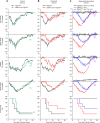

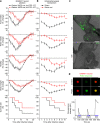


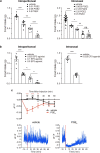




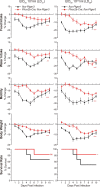

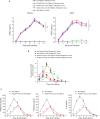
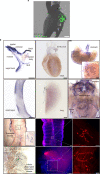
Comment in
-
How the brain senses a flu infection - and orders the body to rest.Nature. 2023 Mar;615(7952):385. doi: 10.1038/d41586-023-00675-0. Nature. 2023. PMID: 36890322 No abstract available.
Similar articles
-
Prostaglandin E2 contributes to the synthesis of brain-derived neurotrophic factor in primary sensory neuron in ganglion explant cultures and in a neuropathic pain model.Exp Neurol. 2012 Apr;234(2):466-81. doi: 10.1016/j.expneurol.2012.01.021. Epub 2012 Jan 27. Exp Neurol. 2012. PMID: 22309829
-
Polygalasaponin F treats mice with pneumonia induced by influenza virus.Inflammopharmacology. 2020 Feb;28(1):299-310. doi: 10.1007/s10787-019-00633-1. Epub 2019 Aug 24. Inflammopharmacology. 2020. PMID: 31446589 Free PMC article.
-
Molecular consequences of peripheral Influenza A infection on cell populations in the murine hypothalamus.Elife. 2023 Sep 12;12:RP87515. doi: 10.7554/eLife.87515. Elife. 2023. PMID: 37698546 Free PMC article.
-
Fever and hypothermia in systemic inflammation: recent discoveries and revisions.Front Biosci. 2005 Sep 1;10:2193-216. doi: 10.2741/1690. Front Biosci. 2005. PMID: 15970487 Review.
-
Regulatory mechanism of the gastric hyperemic response following barrier disruption: roles of cyclooxygenase-1, the prostaglandin E2/EP1 receptor and sensory neurons.Curr Pharm Des. 2015;21(21):3002-11. doi: 10.2174/1381612821666150514105248. Curr Pharm Des. 2015. PMID: 26004410 Review.
Cited by
-
Stem cells and pain.World J Stem Cells. 2023 Dec 26;15(12):1035-1062. doi: 10.4252/wjsc.v15.i12.1035. World J Stem Cells. 2023. PMID: 38179216 Free PMC article. Review.
-
A vagal reflex evoked by airway closure.Nature. 2024 Mar;627(8005):830-838. doi: 10.1038/s41586-024-07144-2. Epub 2024 Mar 6. Nature. 2024. PMID: 38448588 Free PMC article.
-
Cardiovascular Brain Circuits.Circ Res. 2023 May 26;132(11):1546-1565. doi: 10.1161/CIRCRESAHA.123.322791. Epub 2023 May 25. Circ Res. 2023. PMID: 37228235 Free PMC article. Review.
-
SARS-CoV-2 papain-like protease activates nociceptors to drive sneeze and pain.bioRxiv [Preprint]. 2024 Jan 11:2024.01.10.575114. doi: 10.1101/2024.01.10.575114. bioRxiv. 2024. PMID: 38260476 Free PMC article. Preprint.
-
The Impact of the Nervous System on Arteries and the Heart: The Neuroimmune Cardiovascular Circuit Hypothesis.Cells. 2023 Oct 19;12(20):2485. doi: 10.3390/cells12202485. Cells. 2023. PMID: 37887328 Free PMC article.
References
Publication types
MeSH terms
Substances
Grants and funding
LinkOut - more resources
Full Text Sources
Other Literature Sources
Molecular Biology Databases
Research Materials

